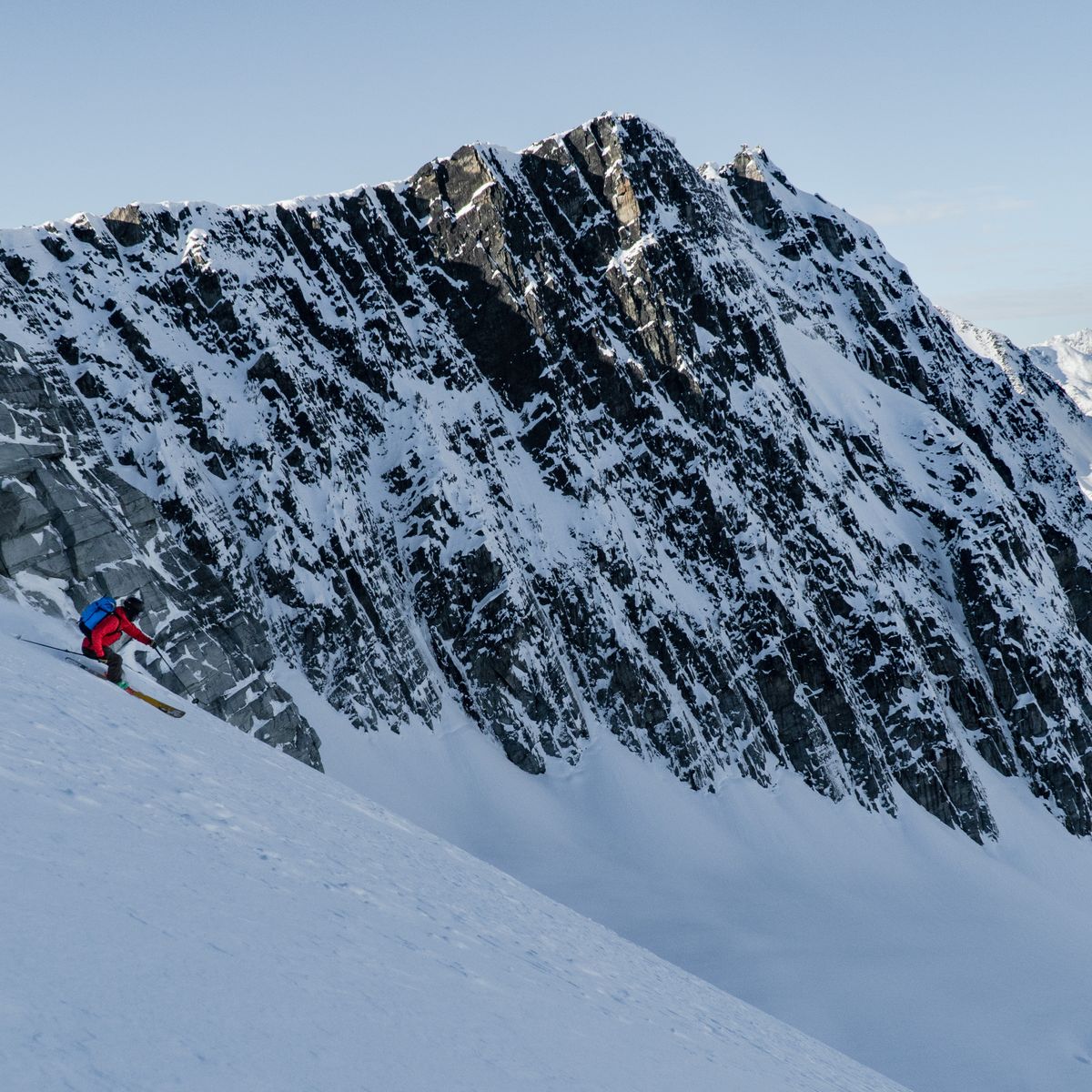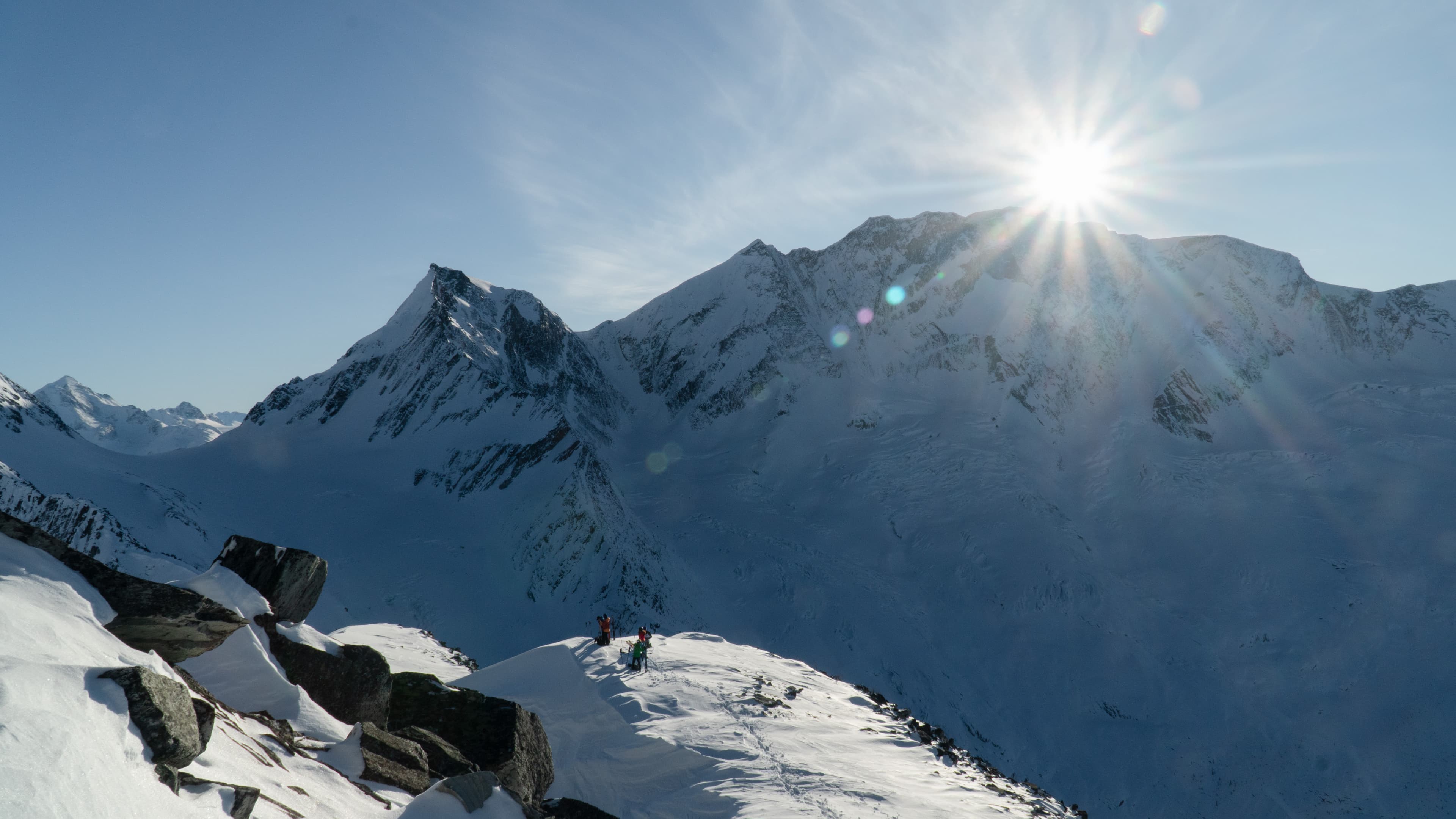A guide to the best ski tours in Glacier National Park
Rogers Pass, located in Glacier National Park, is a mere 45-minute drive east of Revelstoke. Equally thriving in the winter as in the summer, the national park is an absolute gem. With most ski tours starting at the edge of the Trans-Canada Highway, Rogers Pass is known as a world-class backcountry skiing and snowboarding destination. It holds a truly special place in my heart due to its deep snowpack, incredibly varied terrain, and rich history. After spending a little under a decade exploring the area, I've compiled a short list of the best ski tours at Rogers Pass based on the kind of adventure you're after.
*A winter permit is required when touring in Glacier National Park.
Glacier Travel Required
Lily-Dome Traverse
The Lily-Dome Traverse is a stunning route that links two of my favourite valleys in Rogers Pass: Loop Brook and Asulkan. With 1,600 metres of vertical gain, it’s a full-value day that delivers striking alpine views, exposed bootpacks, and steep glacier descents - a true classic. The ascent up the Lily Glacier is usually straightforward, but glacial recession has noticeably increased the crevasse hazard. Hidden or open crevasses are now more frequent along the standard route, so bring proper glacier travel gear and brush up on glacier travel skills beforehand.

Fred, carving a steep turn down the Dome Glacier © The Uptrack
Video Peak SE Face
The southeast face of Video Peak is a true Rogers Pass classic, an iconic line that consistently draws a steady stream of skiers and splitboarders up Hospital Bowl. While the descent is shorter and less satisfying than the neighbouring 8812 Bowl, it still earns its place among the iconic runs thanks to its summit experience and sweeping views. Skiing the Hospital Gullies on the way down is always a blast.
That said, the SE face is a massive planar slope prone to avalanching under the right conditions. Assess it carefully before dropping in. When the main face gets tracked out (which it usually does right after a storm), consider skiing the southern aspect instead. It often holds untouched snow and links easily into the 8812 Bowl via the Bruins Ridge uptrack. The result? A solid hit of alpine pow - yew!

Skiiers climbing the Video Peak SE Face © The Uptrack
8812 Bowl
No Rogers Pass hit list is complete without some big cirque skiing, and 8812 Bowl delivers exactly that. The climb is no joke - if you can push through the brushy, often beat-up Hospital Gully uptrack and tackle the exposed traverse along Bruins Ridge, you’ve officially graduated from the Rogers Pass Academy.
Jokes aside, 8812 Bowl offers a stellar 1,200-metre descent from alpine heights down to treeline, with panoramic views of the Connaught, Cougar, and Ursus valleys. The route tops out at 8812 Col - a notoriously windy spot perched above Balu Pass. Some skiers bring ski crampons for the final, often wind-hammered section along the ridge. If you’ve got the legs and the nerve, this run is absolutely worth the effort.

Group of ski tourers gliding along the Bruins Ridge © The Uptrack
Avalanche Crest
Avalanche Crest easily earns a spot among the top tours in Rogers Pass. With a consistent 1,000-metre fall-line descent straight to the Trans-Canada Highway - and a perfect view of the Illecillewaet parking lot where you started - it’s one of the few routes offering an uninterrupted summit-to-car descent. The run is packed with features: booters, gullies, pillows, you name it.
There’s something for everyone here. The southern end of the crest offers more sheltered, treed lines, while the northern end serves up steep, open gullies. Unsurprisingly, its proximity to the highway and excellent terrain make Avalanche Crest a popular zone, so keep your head on a swivel for skiers and boarders riding above you. The busy uptrack can get slick. Ski crampons are often a good idea. Being a west-facing slope, the snowpack can get quite solar as soon as winter starts. Watch for buried melt-freeze crusts or signs of a warming snowpack.

Phil, heading up the Avalanche South Bowl © The Uptrack
Rogers Run
Rogers Run delivers 850 metres of fall-line magic. From open alpine slopes to sparse trees, wide avalanche paths, and massive pillow fields, it’s got something for every rider. Even better, it’s just 2 km from the Rogers Pass Discovery Centre via the Grizzly Shoulder uptrack. That proximity means you can easily lap it two or three times in a day without cutting it too close to sunset. I've got fond memories of skiing Rogers Run with a good group of friends, hitting the endless pillow lines and weaving through a burnt patch of trees. With all that going for it, Rogers Run is understandably popular. Expect a crowd, especially avalanche skills training courses, stacked with students and guides. If you want first tracks, plan to start early. Navigation through the trees can be tricky, so a GPS is a smart call. Watch out for the steep gully and cliffs to the skier’s left of the route—those big pillows are a blast later in the season but can be sketchy early on.

Kaitlin, skiing powder down Rogers Run © The Uptrack

Prepare For A Tour
Winter Permit System
Parks Canada runs an artillery-based avalanche control program to ensure the safety of travellers in the highway corridor. The Winter Permit System grants us access to Rogers Pass' terrain. Some areas of the park may be closed on a given day.
Daily avalanche bulletin
Avalanche Canada, in cooperation with Parks Canada, releases avalanche bulletins in the winter season. They're prepared daily by experienced avalanche forecasters and meteorologists, keeping you up to date on the avalanche hazard, snowpack conditions and upcoming weather.
Hire a guide
Rogers Pass' complex terrain and avalanche conditions are particularly unforgiving. Seek out an ACMG-certified ski or mountain guide to explore the area while maximizing your safety.
The Real Stoke
Fuel Your Fire Within.
Experience #TheRealStoke for yourself.
